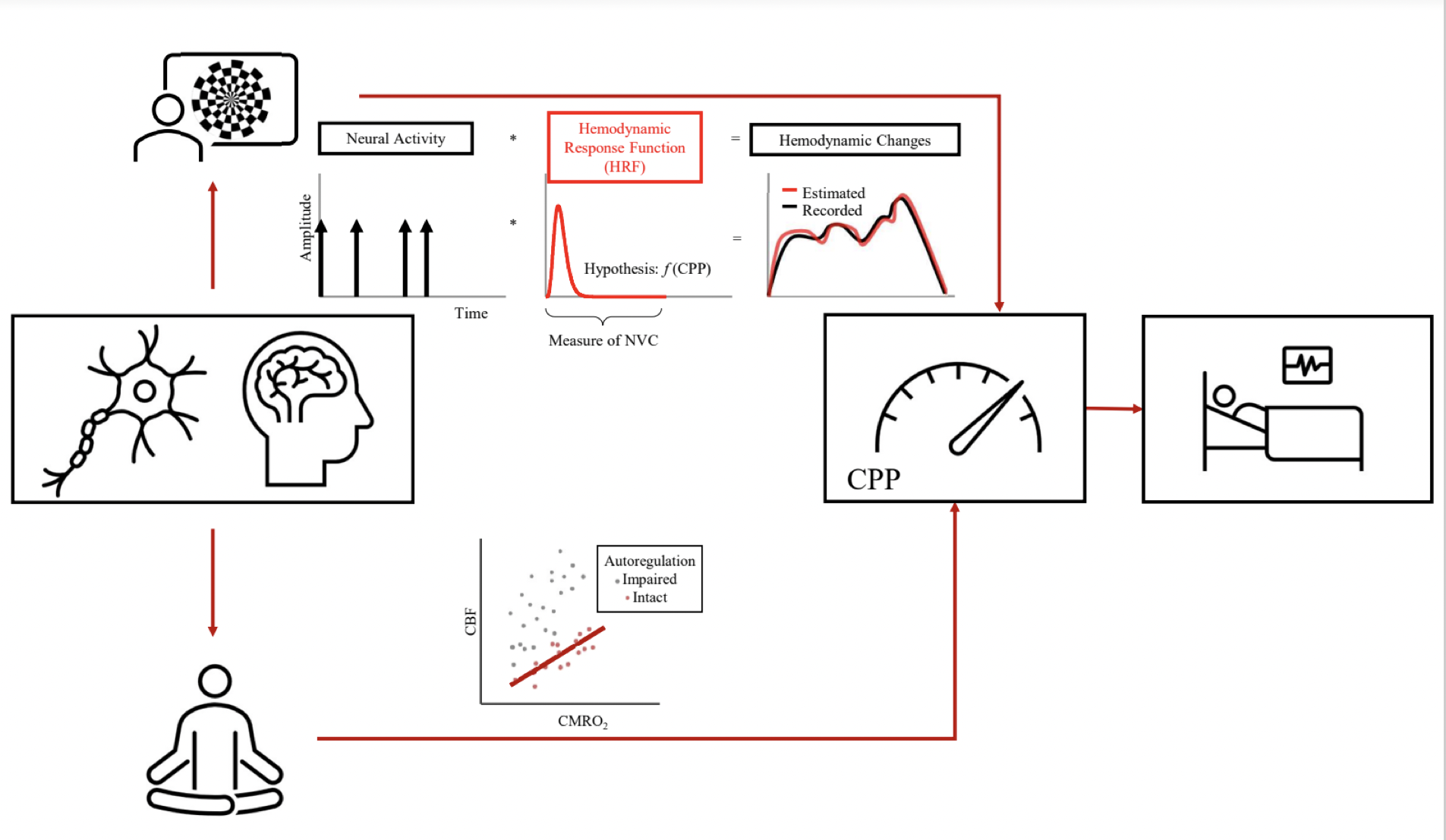
Blood Flow Regulation
Intracranial Pressure
Intracranial pressure, the pressure inside our skull, can be elevated in many diseases and conditions such as traumatic brain injury, hydrocephalus, tumor, or stroke. Measuring this pressure is a crucial diagnostic tool for neurologists, but often requires drilling a hole into the skull to place pressure sensors into the brain’s tissue. We developed a way to measure intracranial pressure non-invasively. A machine-learning algorithm can interpret changes in the shape of heart beats in cerebral blood flow and blood volume measured with diffuse correlation spectroscopy (DCS) and near-infrared spectroscopy (NIRS), respectively. Stronger morphological changes of the pulses indicate higher pressure in the brain. Related News
Neurovascular Coupling and Cerebral Perfusion Pressure
An adequate amount of blood flow is necessary in the brain to provide oxygen for maintaining brain functions. The cerebral perfusion pressure (CPP) alters this blood flow, meanwhile a compensatory mechanism called cerebral autoregulation ensures that the brain does not receive too much or too little blood even when CPP changes. However, there are diseases where cerebral autoregulation might be compromised such as hydrocephalus, stroke and traumatic brain injury. In such clinical conditions, it is necessary to constantly monitor CPP and associated brain health to allow timely intervention.

In this project, we developed neurovascular biomarkers using near-infrared spectroscopy (NIRS), electroencephalography (EEG) and diffuse correlation spectroscopy (DCS) to understand brain health under altering CPP. We found changes in the link between local neural activity and hemodynamics as well as alteration in cerebral metabolic rate of oxygen consumption with CPP in response to an external stimulus and at-rest, respectively. This work shows the potential of non-invasive bedside-compatible techniques to continuously monitor brain health in neurocritical patients with altered autoregulation and hopefully improve patient prognosis through timely detection. Related Publications
People Involved:
